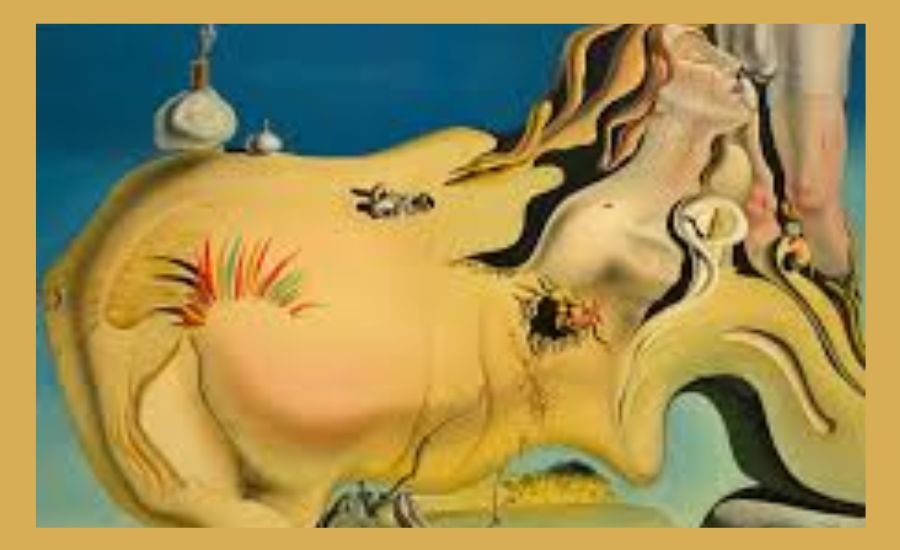Salvador Dali is a name that needs no introduction in the art world. Among his many intriguing works, The Great Masturbator stands out as one of his most surreal and thought-provoking creations. At Streamest, we dive deep into this masterpiece to unravel its mysteries and provide insights that’ll amaze and inspire you. Whether you love art or are curious about Salvador Dali’s imagination, this blog will help you explore this iconic work in a fresh, easy-to-understand way.
What is The Great Masturbator?
Salvador Dali’s The Great Masturbator is a surreal painting created in 1929. It reflects his inner thoughts, dreams, and fears. The central figure in the painting is a distorted human face, often interpreted as Dali himself. The artwork is filled with symbolic images that represent themes like love, desire, fear, and subconscious struggles.
The painting combines a dreamlike quality with strange, unsettling imagery. It’s not just a visual treat but also a puzzle that invites you to explore the depths of Dali’s mind.
The Story Behind Salvador Dali’s Masterpiece

Inspiration and Emotions
Dali painted The Great Masturbator shortly after meeting his wife, Gala. This period of his life was full of emotional intensity and new experiences. The work is believed to reflect his complex feelings about love and intimacy.
Symbolism in the Painting
The artwork features numerous elements, including:
- The Grasshopper: A symbol of fear and anxiety, it crawls over the distorted face.
- The Woman’s Head: Likely representing the Gala, it embodies love and desire.
- Ants and Cuts: These suggest decay and unease.
Each element contributes to the surreal atmosphere, leaving viewers fascinated and puzzled.
Read More: Andywarhella
Analyzing the Symbolism of The Great Masturbator
The Central Figure
At the heart of the painting is an upside-down face. Many art critics believe it represents Dali himself, showcasing his vulnerability and struggles.
The Grasshopper and Ants
Dali had a lifelong fear of insects, and this fear is vividly portrayed in the grasshopper and ants. These elements symbolize decay and a loss of control, making the painting both haunting and captivating.
Themes of Fertility and Desire
The presence of a lily and a lion’s head suggests themes of fertility and primal instincts. These elements contrast with the unsettling imagery, adding depth to the painting.
Why The Great Masturbator is a Must-See for Art Lovers
This painting is more than just art; it’s a glimpse into Dali’s mind. Here are some reasons why you should explore it:
- Innovative Techniques: Dali’s paranoiac-critical method is evident in the way he blends multiple images into one.
- Deep Symbolism: Every detail in the painting has a story to tell.
- Timeless Appeal: The themes of fear, love, and subconscious struggles remain relevant today.
FAQs
Q: What does The Great Masturbator symbolize? A: The painting symbolizes Dali’s fears, desires, and subconscious struggles. It’s filled with surreal imagery that reflects his inner thoughts.
Q: Where can I see The Great Masturbator? A: The original painting is housed at the Reina Sofia Museum in Madrid, Spain.
Q: Why is the grasshopper significant in the painting? A: The grasshopper represents Dali’s fear of insects, symbolizing anxiety and loss of control.
Q: How can I understand the symbolism in Dali’s works? A: Exploring Dali’s life and inspirations can help you interpret his surreal imagery. Each element has a deeper meaning.
Conclusion
Salvador Dali’s The Great Masturbator is not just a painting; it’s a journey into the surreal world of one of the most imaginative artists of all time. At Streamest, we believe that understanding art doesn’t have to be complicated. With this blog, we hope you’ve gained a clearer view of this masterpiece and the genius behind it.
Read About Next: The-symbolism-history-and-artistry-of-the-kiss-by-gustav-klimt






